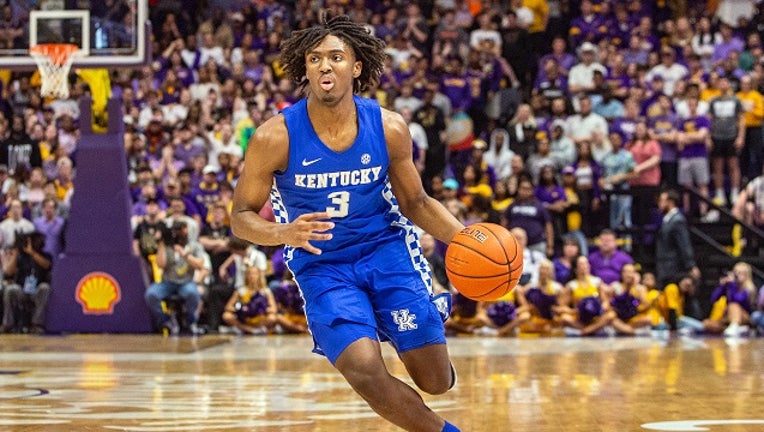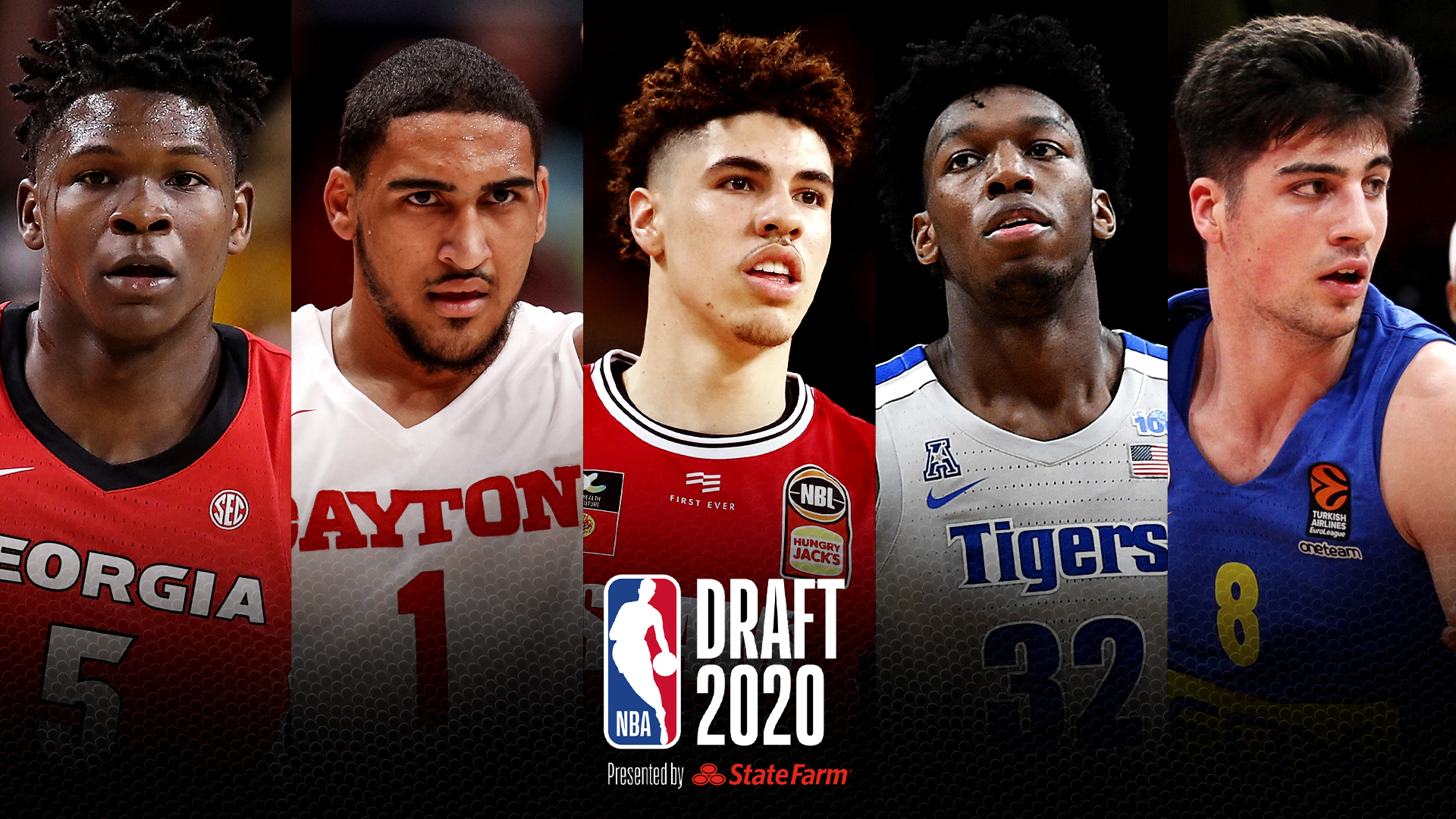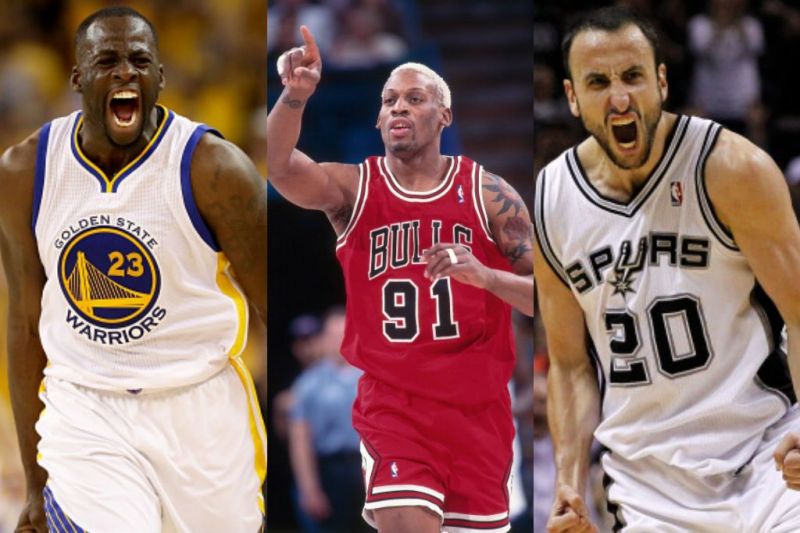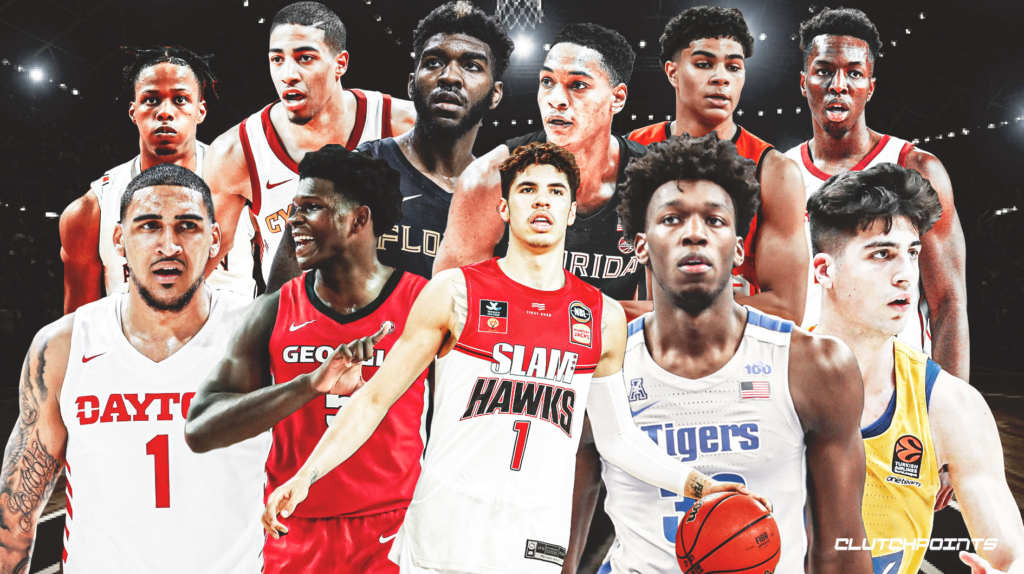Wiseman entered college as the No. 1 recruit in the class and has long been identified as a possible top overall draft pick. He has great size and length for a center, and has shown incredible end-to-end speed running the open floor. His game is going to be protecting the rim on defense, catching lobs, and getting putbacks on offense.
Wiseman should be a good player, but his limited versatility makes him feel like an underwhelming No. 2 overall pick. He isn't a polished shooter or passer on offense and defensively lacks lateral quickness and quick jumping ability. Despite having a relatively narrow skill set, Wiseman should be ready to handle minutes as a rookie just based on his elite frame and ability to run the floor. We would have Onyeka Okongwu as the top big man prospect, but Wiseman certainly should have a long and productive career even if it doesn't feel like he has all that much upside. By all indications, the Wolves did everything they could to trade this pick but couldn't find a team that wanted it. Edwards has otherworldly athletic explosiveness, but he isn't a polished decision-maker on either end.
That shows up defensively and also in his subpar scoring efficiency, where he finished with 51.7 percent true shooting. Having two other takeover scorers next to him should ease Edwards' transition into the NBA, but the Wolves should be thinking long-term with his development. He needs to improve his focus and effort defensively and force his way to the rim more consistently instead of settling for jumpers. Edwards still has a high long-term upside with his raw athleticism and shot-making ability, but he has a long way to go before he's a winning player in the NBA. Barnes feels like a safe bet to be a very good NBA defender with terrific length, an impressive 3.4 percent steal rate, and the versatility to guard up to four positions.
Offensively, he finished with a 31.7 percent assist rate this season that led the ACC. Barnes always seems to know where his teammates are on the floor, and he finds a way to get them the ball. The question is how much of a benefit will his passing be if opposing NBA teams don't respect his scoring ability. Barnes is a rough shooter — 27.5 percent from three on 40 attempts, 62.1 percent from the foul line on 66 attempts — and doesn't yet have a ton of tricks around the rim to get a bucket in a pinch.
While the scoring concerns are real, Barnes' effort level, defense, and passing makes him the type of player you want on your side in a big game. The Pelicans made this pick on behalf of the Grizzlies, who will officially receive it after their recent trade is consummated in August. In that deal, Memphis moved up to No. 10 from No. 17, but ultimately selected a player here in Williams who was widely projected to be on the board at that point.
Williams significantly helped himself in the predraft process with a series of strong workouts, and his size, shooting ability and ball skills have always pointed to impressive upside. But many teams were concerned with his history of inconsistency and lack of physicality, and he was expected to come off the board later in the draft. Memphis has drafted well in recent years and deserves the benefit of the doubt here—if Williams can reach his potential, he can be a meaningful addition to their core. But this is a high-risk, high-reward move that will need time to properly evaluate.
2020 Nba Draft 1St Pick Maxey is a perfect fit in Philadelphia as an aggressive guard who shines attacking the rim and playing physical point of attack defense with a 6'6 wingspan. While he didn't shoot the ball as well as expected in college, he was a great free throw shooter who should improve from three-point range in time. For now, Maxey's touch on floaters and his ability to contort his body for tough finishes at the rim will be a nice addition next to Ben Simmons' oversized playmaking at the four.
Maxey deserved to be a lottery pick, but he found a great home on the Sixers. Kispert saw his draft stock explode in his senior season playing for a powerhouse Gonzaga team that fell one game short of an undefeated season. The 6'7 wing is arguably the best shooter in this draft class, hitting better than 43 percent of his threes on high volume for the second straight season. Kispert isn't going to create off the dribble and will have to prove himself defensively, but it's easy to envision him slotting into a bench shooter role from day one. The Hawks would likely be elated if he was somehow still on the board at No. 21.
This pick was originally set to be Baylor guard Jared Butler before Tuesday's news that he's yet to be cleared by the league due to a heart issue. Şengün is already dominating one of the better professional leagues in the world at just 18 years old. The 6'10, 240 pound big man averaged 19.2 points, 9.4 rebounds, and 2.5 assists per game in the Turkish Super League on remarkable 64.6 percent shooting from the floor.
Şengün has great hands and soft touch around the rim on offense, while also showing an ability to find open teammates with his passing. He isn't a three-point shooter to this point, but he's been stretching out his jumper and is already at 81 percent from the foul line. Şengün isn't super quick laterally and is a bit undersized for an NBA center, putting his NBA fit into question.
The team that team takes him will bet on his incredible production against grown men at such an early age and figure out his fit in today's NBA later. This is the draft's first major surprise pick, but it's one I kind of love for the Thunder, who kept their interest in Giddey well under wraps. After trying and ultimately opting not to move up in the draft, Oklahoma City is taking a chance on Giddey's incredible passing ability. He had a prodigious season as a teenager in his native Australia, and emerged as an elite prospect after spending time developing in the NBA's Global Academy Program. The Thunder are focused on adding talent, and his size, skill level and low-maintenance game fit their preferences.
He's ultimately more NBA-ready than the other players on the board here, and his youth and advanced game point to room for growth. Whether he's a full-time point guard or a wing, Giddey has the type of flexible approach that should allow him to excel. External video 2020 NBA Draft Lottery Drawing, NBA's official YouTube channel. August 20, 2020.The NBA draft lottery is held annually to determine the draft order for the teams that did not make the playoffs in the preceding season. Every NBA team that missed the NBA playoffs holds a chance at winning a top-four pick, but teams with worse records have a better chance at winning a top-four pick, effective as of the 2019 draft. After the lottery selects the teams that receive a top-four pick, the other teams receive an NBA draft pick based on their winning percentage from the prior season.
As it is commonplace in the event of identical win-loss records, the NBA performs a random drawing to break ties for not just lottery teams, but also for playoff teams with equal records. This year, the Sacramento Kings won a tiebreaker for the draft lottery over the New Orleans Pelicans despite having a better overall record to conclude the regular season, bubble games included. At the start of this year's draft combine, only 60 prospects were confirmed to participate in this event. J. Hampton was also invited as an automatically eligible draft prospect for this year, both representing Australia's NBL as outsider Rising Stars for different teams. Like with prior years, players still held the option to either sit out the combine or have only limited participation there, such as with LaMelo Ball doing interviews with teams only.
In the second half of the combine, teams were allowed to meet with any candidate that had mutual interest in them back, though each team had a set limit of meetings with players in mind before the draft began. These meetings with players allowed teams to properly gauge each player to the best of their abilities during this time. Duke freshman Cassius Stanley is one of the most versatile offensive players in the 2020 draft class. He can play anywhere one through three, including moments as the primary ballhandler both in pick-and-roll and in transition.
Stanley is an outstanding athlete, as he broke the school record for vertical leap set by Zion Williamson. Stanley is one of the most electrifying prospects to come out of Los Angeles. He would be a great addition to his hometown Lakers, especially considering the organization does not have many draft picks over the next few years. He finished his time in the G League bubble with a 30-point playoff game against Raptors 905 and former first-round picks/NBA rotation players.
The Pacers were tabbed as suitors for Davion Mitchell, Duarte and Kispert here, and wound up with Duarte, whom a number of teams tried to trade up and draft in the lottery. Indiana aims to compete for the playoffs under Rick Carlisle next season, and Duarte should be able to give them immediate minutes. While his upside likely isn't immense, he makes a great deal of sense for Indiana. BYU Cougars senior Yoeli Childs was easily one of the most underrated players in college basketball this season, averaging 22.2 points and 9.0 rebounds per game while shooting a stunning 22-for-45 (48.9%) on 3-pointers.
The forward played a crucial role in helping BYU finish with a top-10 offense nationally this season, per KenPom. Among all Division I players who had as many pick-and-pop possessions, according to Synergy, only one was more efficient. Meanwhile, his defensive rebound percentage ( 28.2%) was the best in the West Conference Conference. Colorado junior Tyler Bey averaged 13.8 points, 1.5 steals and 1.2 blocks per game this season. After winning Pac-12 Most Improved Player of the Year in 2019, he won Pac-12 Defensive Player of the Year in 2020. He was pulling down 9.0 rebounds per game, too, far more than expected for a player his size.
In fact, his defensive rebound percentage ( 27.7%) ranked fourth-best among all players 6-7 or shorter. Bey would be a solid option on the wing for Oklahoma City, potentially replacing Terrance Ferguson in the starting lineup at some point. While Garuba's perimeter offensive skill is rough right now, his ability to compete in one of the better leagues in the world at such a young age is a promising sign for his future. The Thunder would have the option of throwing him into the lineup immediately, or slow playing his development to work on his shot and handle. This year, 205 underclassed draft prospects (i.e., players with remaining college eligibility) had declared by the initial April 26 deadline, with 163 of these players being from college or were high school postgraduates.
The names left over mean they have hired an agent, or have announced that they plan to do so before the night of the draft. Additionally, one more academy postgraduate student managed to enter at the new underclassman deadline. For the first part, players began their league and team interviews via videoconference feeds, similar to this year's draft lottery. Then, in the second part, players began their individual, on-court programs at the NBA team facility nearest the player's home or interim residence instead of at one standardized area. While players were allowed to continue working out on their own even back in September 2020, this section lasted from October 16 until November 16.
This program included strength and agility tests, anthropometric measurements, shooting drills, medical testing and examinations, and a "Pro Day" video filmed via HomeCourt, a mobile basketball training application. The NBA also gave a limit of 10 meetings total with the candidates there, with any extra meetings with someone cutting into their amount allowed for this year. McDaniels couldn't live up to his high school hype as a five-star recruit at Washington. The skinny 6'10 wing struggled to score efficiently with 51.5 percent true shooting and finished the season with 100 turnovers to 65 assists.
There were better bets at this point in the first round, but the Wolves are obviously weighing pre-college sample more heavily than what happened in college for both McDaniels and No. 1 pick Edwards. McDaniels has some upside because of his size and scoring instincts, but we thought there were better players on the board. Azubuike is a massive center at 7-foot, 270 pounds with a reported 7'6 wingspan. 'Dok' was the most dominant physical presence in college basketball this season as a senior at Kansas, getting buckets at will as an inside scorer and improving his defense in the middle. For as good as Azubuike was in college, it feels like his game doesn't fit the modern NBA. Teams will target him in pick-and-rolls and force him to defend in space.
Despite the C grade here, Azubuike is huge and strong and has soft touch close to the rim, so there is some upside here for Utah. The Pistons end the first round with a wing after already landing a point guard and a big . Bey is a 6'8 swingman who hit 45 percent of his three-pointers and showed surprising skill in the pick-and-roll and in transition. The shooting should translate, but there are legitimate questions about how versatile his skill set can be beyond that. Bey had a sound defensive reputation in college, but he'll have to prove he can stick with faster NBA players, or he'll be forced to move up the four.
This isn't the most exciting pick, but Bey's shooting would help any team, especially one that just drafted Killian Hayes to set the table. Toppin was widely expected to be off the board by No. 8, and the Knicks are reportedly thrilled to have him fall. As a redshirt sophomore, Toppin was the most dominant player in college basketball and an incredible finisher at the rim who also made major strides with his jump shot. He could be awesome offensively, provided New York can find a way to replicate the pristine four-out spacing Toppin played within at Dayton. Toppin can't anchor the defense at center and he doesn't have the quickness to defend new-age fours. The Knicks will need a team of determined defenders around him, but his offensive ceiling is so high that this seems like a perfectly fine pick even if New York had a bigger need at guard.
If this draft class lacks an obvious star like Zion Williamson or Luka Doncic, it does have a collection of talented players who fit into larger trends taking over the league. LaMelo Ball has excellent size for a lead playmaker with advanced ball handling and passing ability. Anthony Edwards has every physical attribute, but suffered from inconsistency at both ends. Onyeka Okongwu might not be the first big man draft, but he feels like the most complete front court prospect in the draft as a potential defensive anchor who is efficient in his offensive chances.
The 6'3 freshman guard pushed his veteran supporting cast to the next level by supercharging their attack in transition and becoming an aggressive playmaker on both ends of the floor. He should fit nicely in the Toronto backcourt next to Fred VanVleet. Mobley is the rare big man prospect who combines elite rim protection and versatile pick-and-roll coverage skills on defense with plus passing and projectable shooting on offense. While he lacked an aggressive scoring mindset at USC, Mobley is the type of player who can quietly dominate a game on both ends of the floor while making life easier for all of his teammates.
If the Rockets select him at No. 2 overall, they will be landing a player who would be talented enough to be the top pick in some drafts. This pick was traded to Charlotte, who were intrigued by drafting Jones at No. 11 before James Bouknight surprisingly slipped to them, and were able to find a way back in to select their guy. Jones has a good deal of upside as a rangy defender who can switch onto wings or defend bigs, and combines that with intriguing skill potential and basic shooting ability. He'll be a bit of a project for the Hornets, but playing with a special passer like LaMelo Ball could really enhance his impact as a lob-catcher . Charlotte has the makings of an exciting team—it just may take some time.
Bouknight was projected to come off the board as high as No. 6, and becomes a strong value pick here for the Hornets. While not a perfect fit on a roster that already features a number of ball-dominant players, the selections of Bouknight and LaMelo Ball in consecutive drafts have significantly enhanced the team's talent base. Bouknight is an explosive, inventive scorer with better feel than advertised, and one of my favorite prospects in the draft. If he hits his potential, this could be a pick we look back on in a few years and wonder about. The second Seminole selected on the night, Vassell was one of the most improved players in all of college basketball last year, spearheading Florida State to its first ACC regular-season title. Vassell will fit in nicely with San Antonio's disciplined system, bringing length at 6-7 and potential to be a defensive stopper on the wing.
The draft was originally scheduled to be held at Barclays Center in Brooklyn on June 25, but was instead conducted at ESPN's facilities in Bristol, Connecticut, with the event held via videoconferencing. National Basketball Association teams took turns selecting amateur United States college basketball players and other eligible players, including international players. The draft lottery was originally scheduled to take place on May 19, 2020, but due to the ongoing COVID-19 pandemic, it was instead held on August 20, 2020. The first pick was made by the Minnesota Timberwolves, who selected Anthony Edwards out of Georgia.
Senior guard Skylar Mays averaged 16.7 points with 5.0 rebounds per game this season. He led LSU tp finish among the top five offenses in Division I, according to KenPom. He is a solid 3-and-D prospect who connected on 1.6 shots from beyond the arc per game while also forcing 1.8 steals per game. The guard shot 85.4% on free throws, which projects well for his shooting form. Mays was also one of the most efficient scorers out of the pick-and-roll in the country.
He is tall for a primary ballhandler, and his overall feel for the game is a bit reminiscent of Brooklyn Nets guard Spencer Dinwiddie. The 6-foot-4 wing has been one of the biggest surprises of the rookie class after going undrafted and playing for the Sydney Kings in Australia's NBL last season. Yes, he's 25 years old and significantly older than the other players in his rookie class, but he's settling in comfortably in the NBA and proving to have a bright future on this struggling Rockets team. Anthony is a 6'2 guard whose off-the-dribble shooting ability should be a major addition in Orlando. A consensus top-five recruit entering college, Anthony had a trying freshman season at North Carolina that included a torn meniscus. While he couldn't carry a flawed supporting cast to success, Anthony's game might translate better in the pros.


























